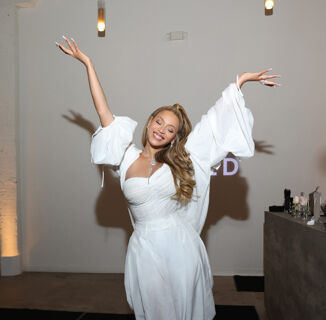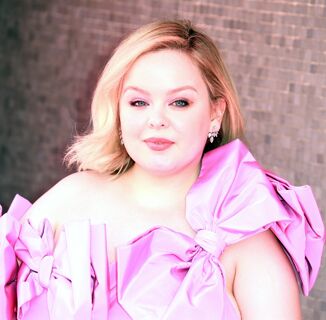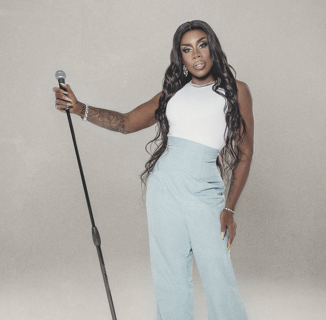Some covers tell stories. And even though I’m not choosing books by covers, I’m always fascinated by the power images hold.
One evening, I was standing in a cozy bookstore browsing through covers and titles. It was late, the staff prepped to close, and I was on my way out when my eyes caught a book on balancing domestic and family workload. An important topic that affects most families, I thought. A star-shaped neon sticker highlighted its success and pleaded for me to reach out. Even though the workload is not an issue in our blended family, I obeyed. My wife and I share our two kids with her ex-wife, who fell in love with someone else shortly after their marriage had ended. We are four women with two children, and it’s a very satisfying balance. But it never hurts to be prepared, so I took the book off the pile.
Its front shows a smiling mother, a smiling father, and a smiling child. The mother is blonde, wears a white blouse, holds a basket with vegetables and her son. The kid is sandwiched in-between his parents and has his father’s hand as well. The father is probably in his late thirties, with well-groomed three-day stubble, lawyer-like. They are white, wealthy, and seem very relaxed – except for the heavy workload the title references.
There isn’t just one way of becoming a parent, I heard myself mumbling while observing the image of the “perfect” family. The photograph alone triggered me to start an argument. Take me as an example! I continued fighting the book’s front. Motherhood was nothing I aimed for. My clock never ticked. Not even when close friends became parents, and that means something. I just met my wife, fell in love, and a year later, I was a bonus mother.
There isn’t just one way of becoming a parent, I heard myself mumbling while observing the image of the “perfect” family.
I knew from the beginning that I wanted to fill in the parts of parenting that I lacked, so I translated what I had established as a professional researcher into my new purpose: spending long hours in bookstores and libraries to gain proper knowledge. Browsing titles and covers, flipping through multiple how-to books, reading articles on early puberty, and, of course, peppering friends with kids with questions. I’d consumed and received helpful and weird information and archived everything reasonable in my freshly-brewed mother brain. And I’ve learned tones. But I also got frustrated. Because of covers like that. Covers that showcased a presumed “perfect family.”
But there is no perfect family. And there’s no typical family either. I kept protesting, holding a book the author did not write for me. I’d realized that what stood out on my path to becoming a mother were not the tantrums and the anger I could receive from my bonus children while assisting them through puberty. It wasn’t the challenges couples of blended families are likely to face (according to statistics, 60 to 70 percent end up splitting up.) Stumbling into parenthood resembled just another area where I did not feel represented. Sources parents consume on their quest for parenting made that crystal-clear.
After spending most of my life in a heteronormative environment as a white cis heterosexual woman, I was used to seeing myself. Everywhere.
I’m aware that a mother-father-child cover is not necessarily an instant trigger. Not every day is a day where I love my happy bubble so much that I would even buy a book with an unflattering cover just to get that you’re-in-the-club smile. But after spending most of my life in a heteronormative environment as a white cis heterosexual woman, I was used to seeing myself. Everywhere. I know how it feels to be represented, as I came out relatively late in life. In my mid-thirties, to be precise. It took me three decades to realize why sex with men is not my thing, and that I am into women. And I believe one reason was that I grew up with a single narrative, and it goes” mother, father, child. That is the socialization my childhood memories are bathed in. That is the narrative I was taught. That’s how others expected my future self to be, the mother of a “normal” family. Me being part of the club was knee-jerk. And I didn’t know better for a long time.
Now that I managed to live my true self, I’m still busy showing that narrative a cold shoulder every time it sneaks into my mind trying to tell me that the way I love and live isn’t “normal.” Some ideas are very resistant. And I’m sure it would have been easier if I’d seen other narratives on my way growing up.
And yes, most times, I’m strong enough to ignore books for traditional nuclear families, and I’m able to turn a blind eye to it and not be bothered. Sometimes I’m even like, “Oh, what a pity!” since an unflattering cover does not equal lousy content.
But it’s the quantity that makes it difficult to cope.
The described cover is just an example. There are thousands of them, and they have an impact. They shape our world just as advertisement does, and movies and television shows. As we believe what we see. That’s why it is crucial to not miss the opportunity to support diversity. To visualize other narratives. To skip the traditional family image. Or at least, not highlighting or dismissing any family constellation, as a beautiful variety exists. I’m sure there are other ways to design a cover.
And what’s even more important is that it does not matter if you are a heterosexual parent or a queer parent when raising children. It’s an exciting, scary, and wonderful thing for all parents, despite their gender or sexual identity.
Help make sure LGBTQ+ stories are being told...
We can't rely on mainstream media to tell our stories. That's why we don't lock our articles behind a paywall. Will you support our mission with a contribution today?
Cancel anytime · Proudly LGBTQ+ owned and operated
Read More in Entertainment
The Latest on INTO
Subscribe to get a twice-weekly dose of queer news, updates, and insights from the INTO team.
in Your Inbox














